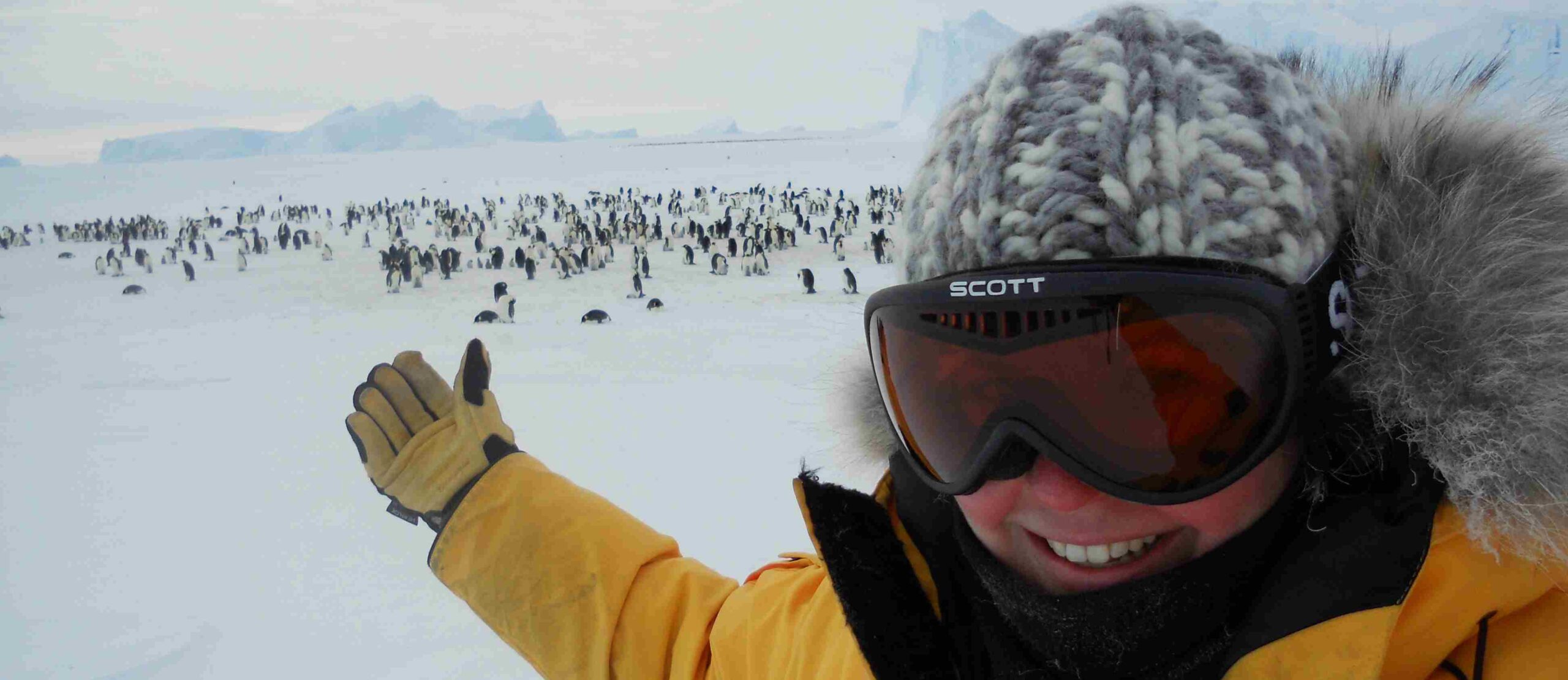The reality of electrician jobs in Antarctica
Electrician jobs in Antarctica – what’s it really like?
Pictured: Lisa Wilkinson at Auster Rookery, near Mawson research station, 2011 © Lisa Wilkinson/Australian Antarctic Division
Tired of schlepping through the suburbs to deal with the latest case of faulty wiring? Fed up with dramas on site and dodgy builders? Itching to travel and go on a big adventure – and keep working? A stint in Antarctica might be just the change you’re searching for.
Going down south as an expeditioner, as they say, is a genuinely unique opportunity to use your skills as an electrician in a new environment. You’ll work in a small, close-knit team and contribute to globally important climate and ocean research in a workplace like no other.
It will be ridiculously cold, we’re not going to lie, but the memories of literally keeping the lights on in this frozen frontier will last a lifetime.
Electrician jobs down south
First, a quick history and geography lesson. Antarctica isn’t a country, nor is it owned by any one country. Under the Antarctic Treaty system, seven countries have what the bureaucrats call territorial claims.
Which is how it came to be that the Australian Antarctic Territory covers about 42% of Antarctica – an area nearly 80% the size of Australia itself. Three stations – Mawson, Davis and Casey – support research projects across this icy land, and it is in these small communities that electricians live and work.
“There’s a whole lot of infrastructure in Antarctica that needs maintaining,” explains electrician Lisa Wilkinson of the Australian Antarctic Division, who did three stints totalling almost three and a half years working in Antarctica.
“We generate our own power and have our own grid, so we're maintaining all the infrastructure, from power generation to distribution to final sub-circuits.
“We’ve got accommodation areas, a surgery, big store areas and emergency vehicle shelters that we need to maintain and ensure are in safe condition.”
How are electricians in Antarctica employed?
Electricians are employed on a seasonal basis. A summer posting, when the temperature can be anywhere from 0 degrees to a balmy minus 15 degrees, is between four and six months. A winter posting – in minus 10 to minus 30 degrees temps, no less! – lasts 12 months to account for pre-departure training in Tasmania.
“When you first apply for Antarctica, you get one contract. If you really enjoy it, you might apply again the next time. It’s a simpler process once you’ve been once to then reapply,” Lisa says.
The experience is undoubtedly cold and can be isolating. In winter, it’s very, very dark. “Once it’s winter, there’s no opportunity to get back home, so it’s a big commitment and a long time to spend away from your family and friends,” Lisa says.
But the benefits far outweigh the negatives, she says. “I’m a maintenance electrician, so I really enjoyed the opportunity to do things that were so far from my normal day-to-day work, because the work itself is similar to anywhere in Australia.
“Clearing snow, doing fuel transfers in the middle of winter from one fuel farm to another, working shift work, working in the dark and other community jobs were really different.”
And then there are the once-in-a-lifetime experiences that Lisa says make the frigid temperatures worthwhile.
“I was lucky enough at Mawson Station to have wintered with a Korean film crew, and we had a lot of opportunities to go out to a place called Auster Rookery where the emperor penguins winter over with their eggs, and then eventually the eggs hatch.
“Being able to see the lifecycle of those emperor penguins is probably something I’ll never forget.”
What it takes to land a posting
Given the all-hands-on-deck nature of life in small, remote communities, electricians need good general experience within the trade to land a position in Antarctica.
“Electricians working in Antarctica are quite multi-skilled – we look after all the electrical, fire, refrigeration and heating ventilation equipment down south. So we need to have a good broad knowledge of equipment when we go down there,” says Lisa, who now works for the head office at the Australian Antarctic Division and helps to recruit electricians.
“It’s the norm these days to specialise in different fields as an electrician because the field of being an electrician is so broad. What we tend to look for is someone who’s got a bit of experience across a broad range of things. That is key to being a successful candidate if you’re looking for a job in Antarctica.”
Other must-haves are a strong sense of adventure and an ability to pitch in and play nice with others. “It’s not something you even throw your hat in the ring for if you’re not interested in something a bit wild and different,” Lisa says. “It’s a small community, so you need to be able to get along with people in that small group.
“You also need to have a good enthusiasm to take on jobs that are outside the norm, because you will have community duties like sorting the rubbish or getting the cargo ready for sending home and various other tasks that are always looking for volunteers.”





Comments (0)
Write a Comment